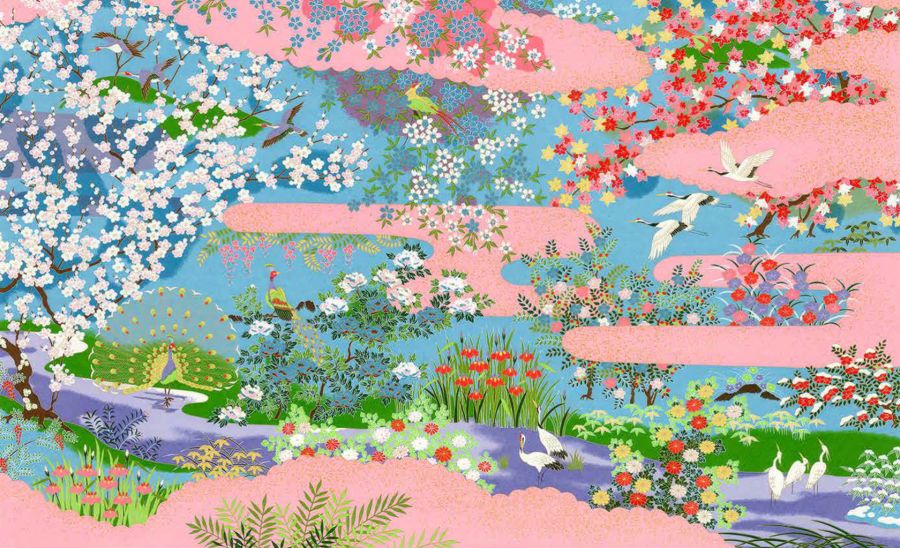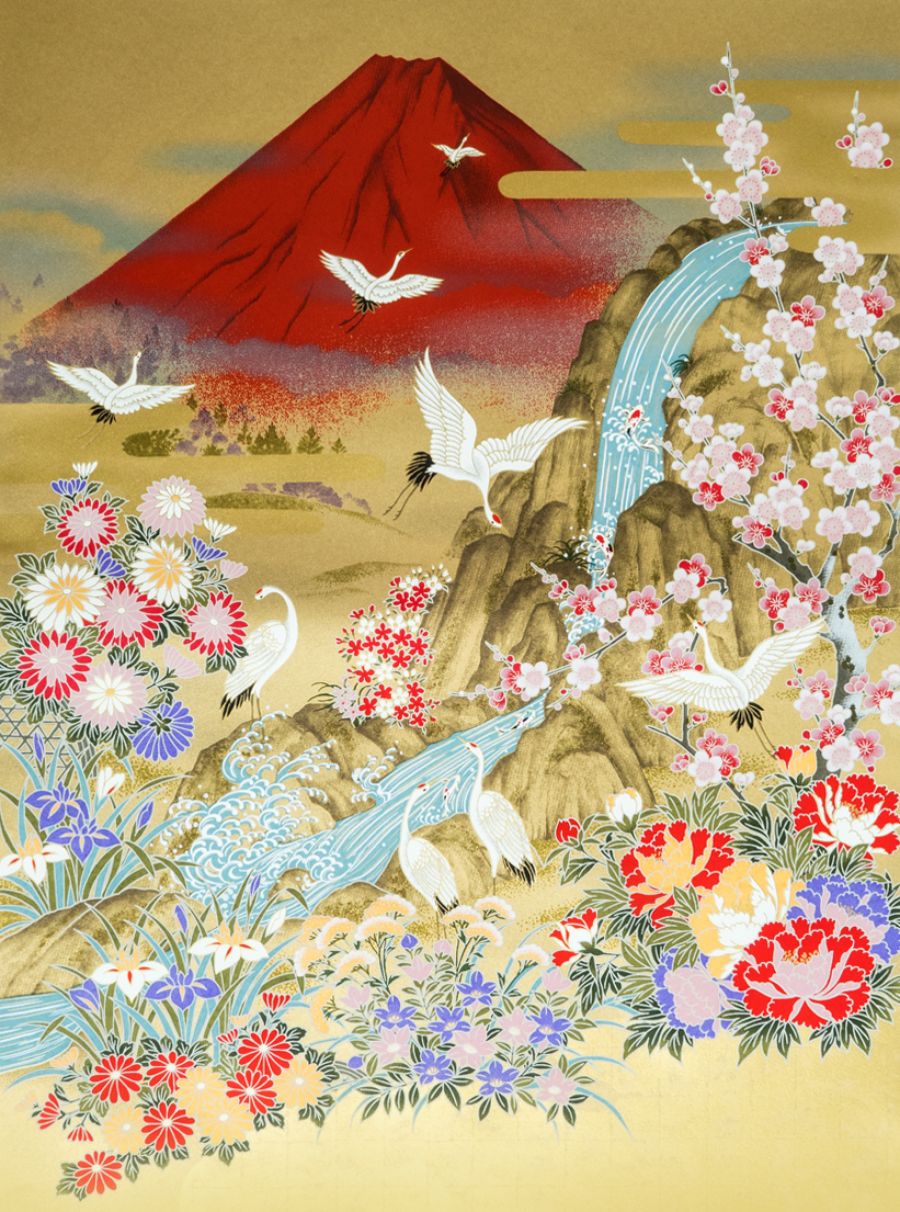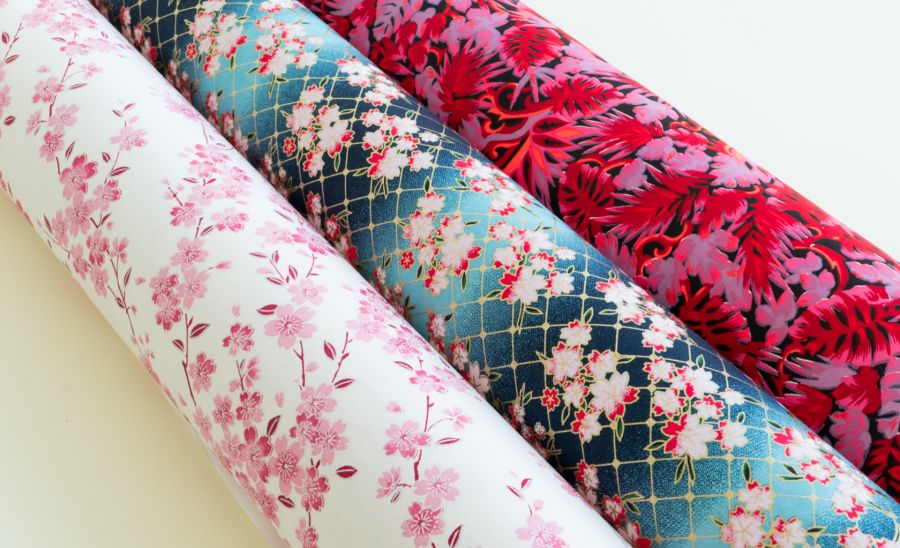
Sogara and Chiyogami: The Art of Traditional Japanese Paper
Japan is known for its rich culture and crafts and has a centuries-long tradition of producing exceptional papers. The elaborately produced Sogara and Chiyogami papers are unique!
Each copy is a small work of art in itself that reflects the outstanding aesthetics and craftsmanship of Japanese culture. These papers are used in a variety of ways in Japanese art and culture.
Discover the magnificent Sogara sheets in our shop at Weihburggasse or order directly from our online shop!
The following motifs are available: Koi fish, Red Fuji, Flock of Cranes and Flowers with Peacock
Sogara paper – magnificent and extraordinary
The tradition of paper making has a long history in Japan, dating back to the 7th century. Sogara paper, also known as "Washi," evolved over the centuries and became a uniquely Japanese art form. The word "Washi" is a combination of "wa" (Japanese) and "shi" (paper) and traditionally refers to handmade paper made from the fibers of mulberry tree bark, hemp, gampi or mitsumata.
Making Sogara paper is a complex process that requires a lot of skill and patience. Paper is made on screens made of bamboo or wood that are covered with fine nets. These screens are dipped into the water containing the paper pulp and slowly pulled out, causing the fibers to spread evenly and bond together. After drying, the paper is often pressed and smoothed to achieve the desired texture and thickness.
One of the most outstanding features of Sogara paper is its durability. Unlike modern paper, which often breaks down after a few decades, properly made washi paper can last for hundreds of years. This makes it particularly valuable for preserving documents and works of art.
The extraordinary motifs of these papers are created using the complex hand screen printing process. A leaf-filling motif is at the center of every Sogara sheet. Up to twenty different layers of color are applied separately to the sheet using appropriate screens. Only very experienced craftsmen can achieve the exact alignment of the pressure levels. Due to the respective drying times, the completion of a sheet can take several days. The luminosity and composition of these papers testify to the mastery of Japanese printing art.
Japanese artisans and cultural organizations are actively working to preserve and promote the tradition of washi making. Through numerous initiatives, knowledge about this ancient craft is passed on and kept alive in the modern world.
Chiyogami paper – diverse and colorful
Chiyogami, also known as Yuzen paper, is made from machine-made washi paper and then decorated with intricate, often hand-printed patterns. The patterns are inspired by traditional kimono designs and are applied to the paper through a screen printing process or other printing technique. Originally the designs were applied using hand-cut stencils and dyes.
Chiyogami is mainly used for decorative purposes. It is ideal for origami, gift wrapping, card making, scrapbooking, and various craft projects. It is also used to decorate boxes, stationery and other handmade objects.
The artistic Chiyogami wrapping paper is perfect as packaging for unusual gifts. Of course, such special gifts also require a matching greeting card. In our store at Weihburggasse you'll find matching cards with laminated Chiyogami motifs - a perfect combination!




